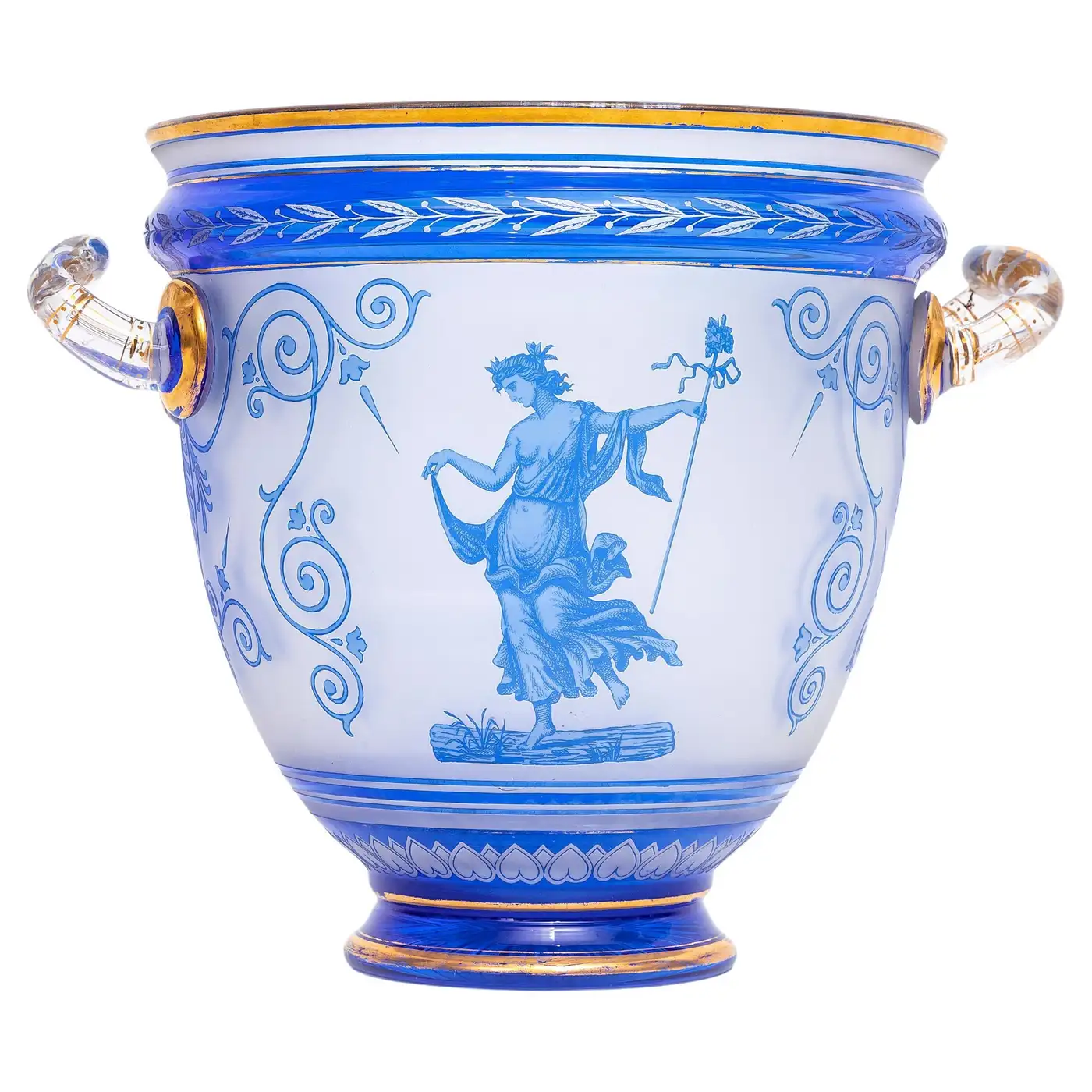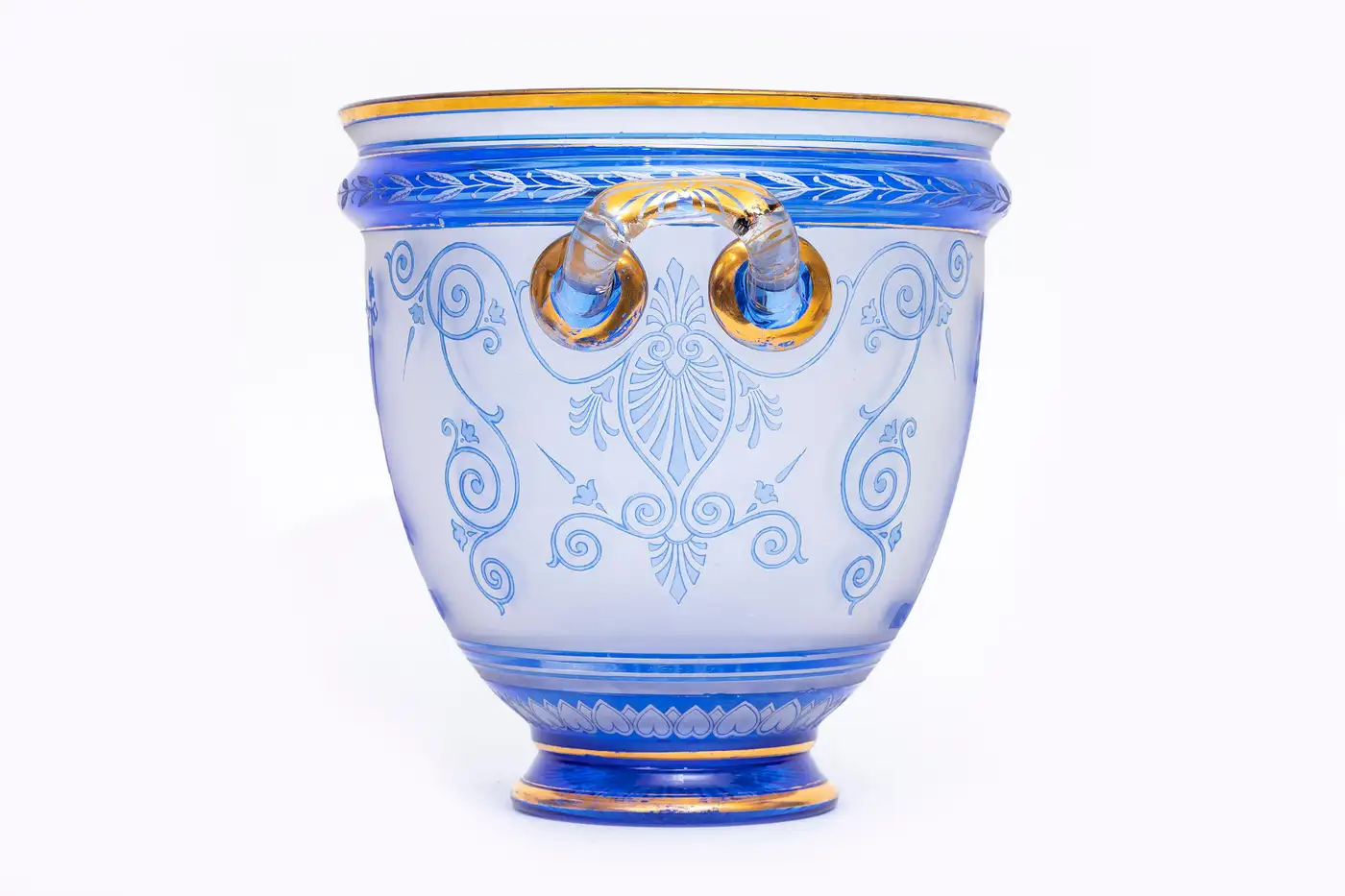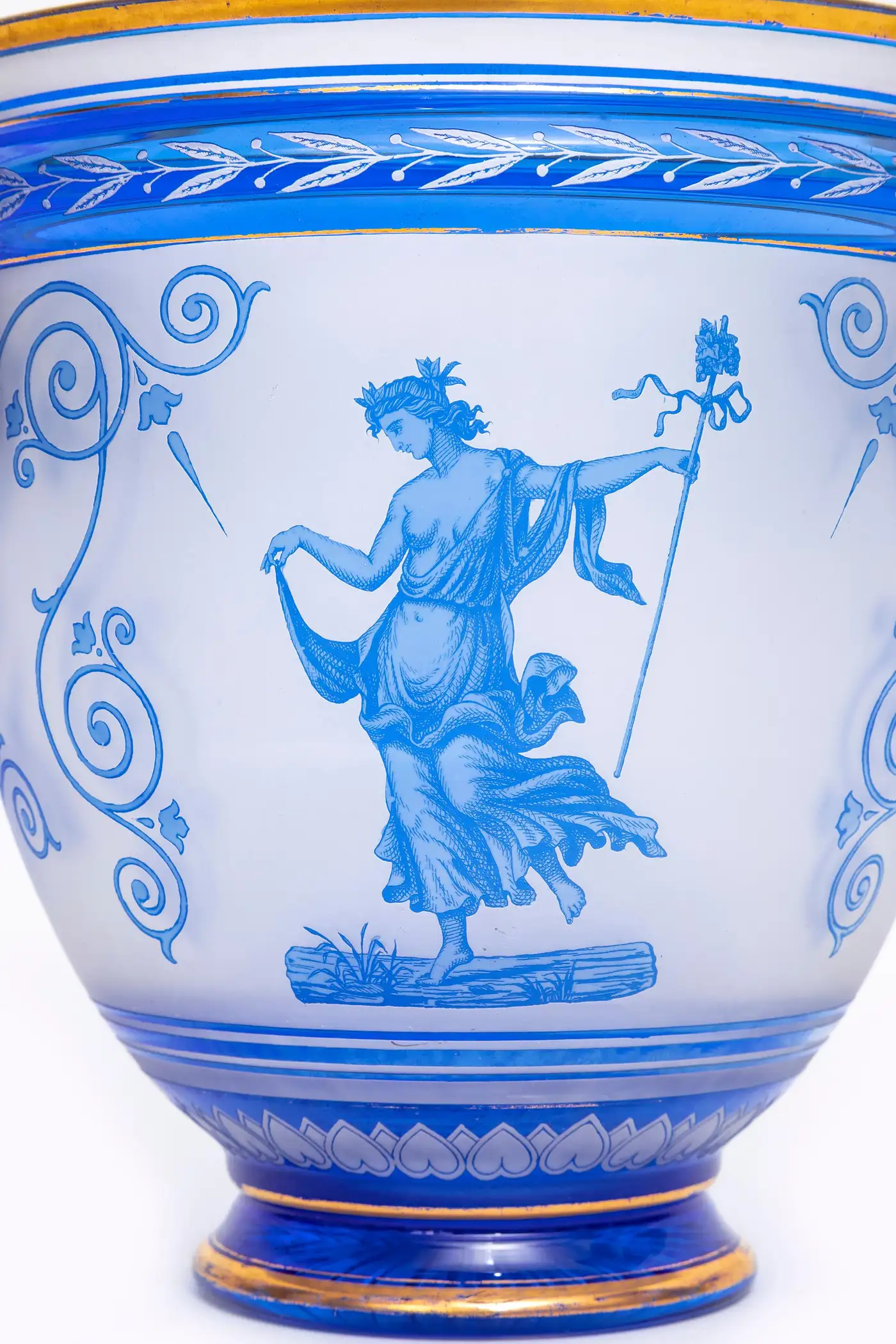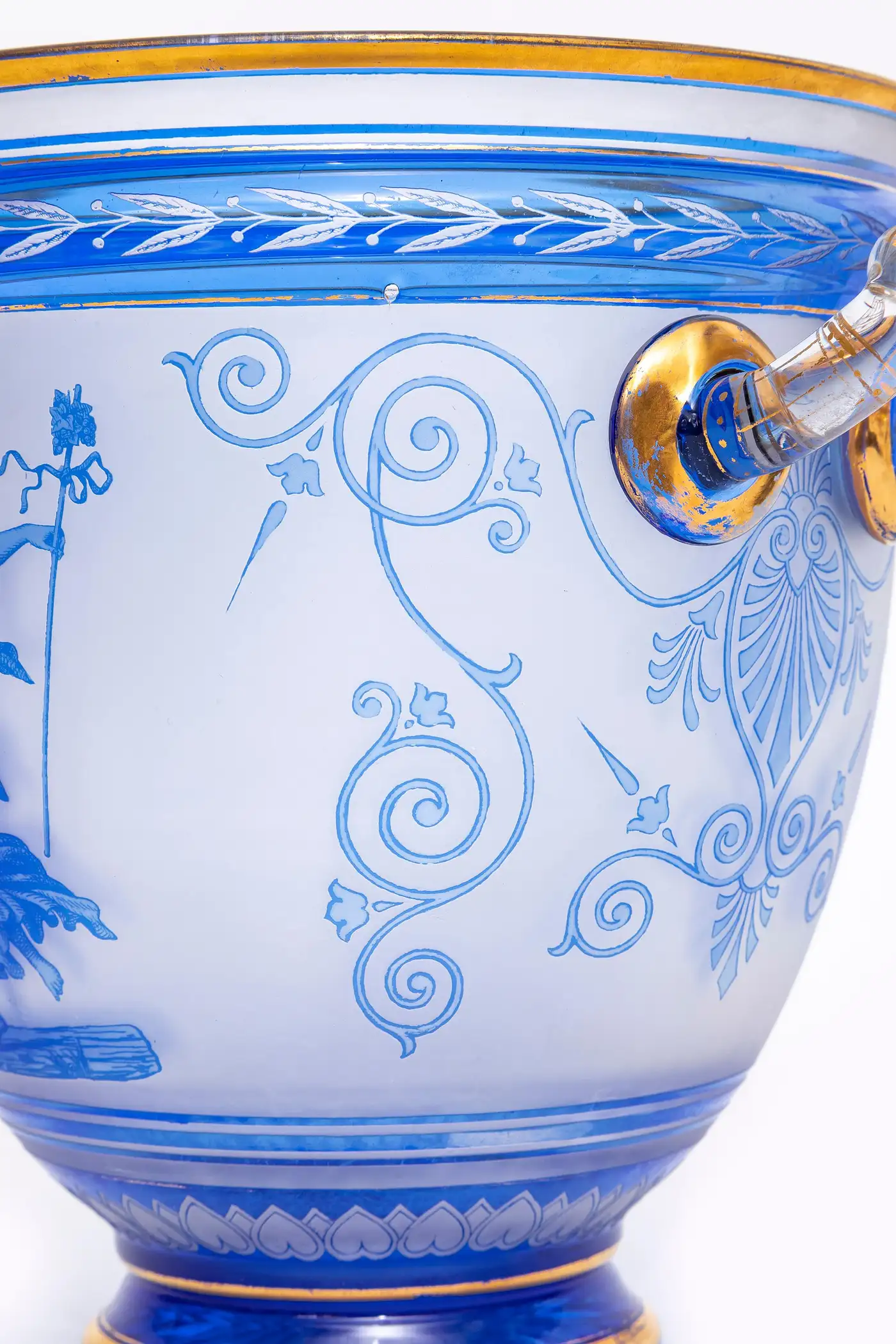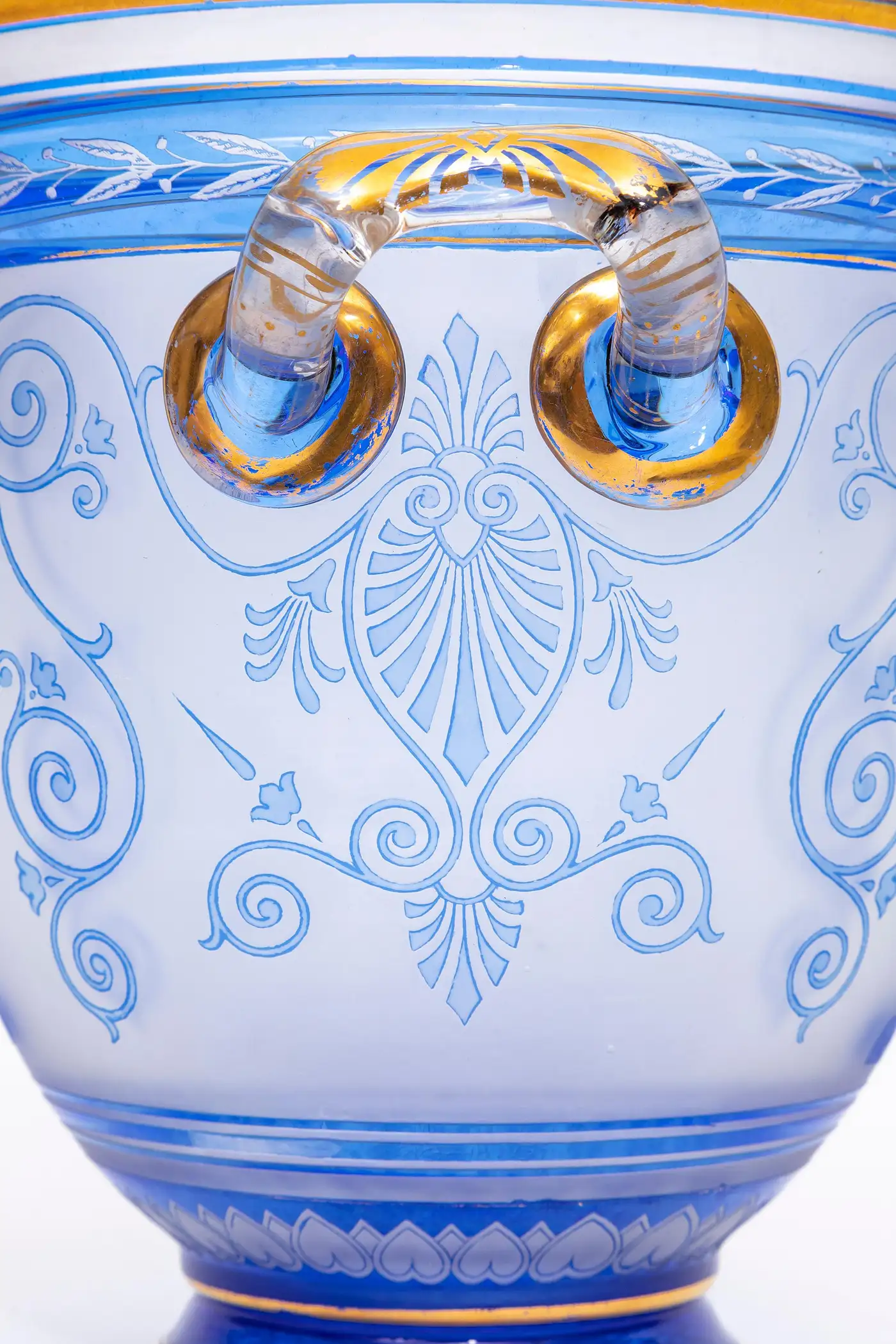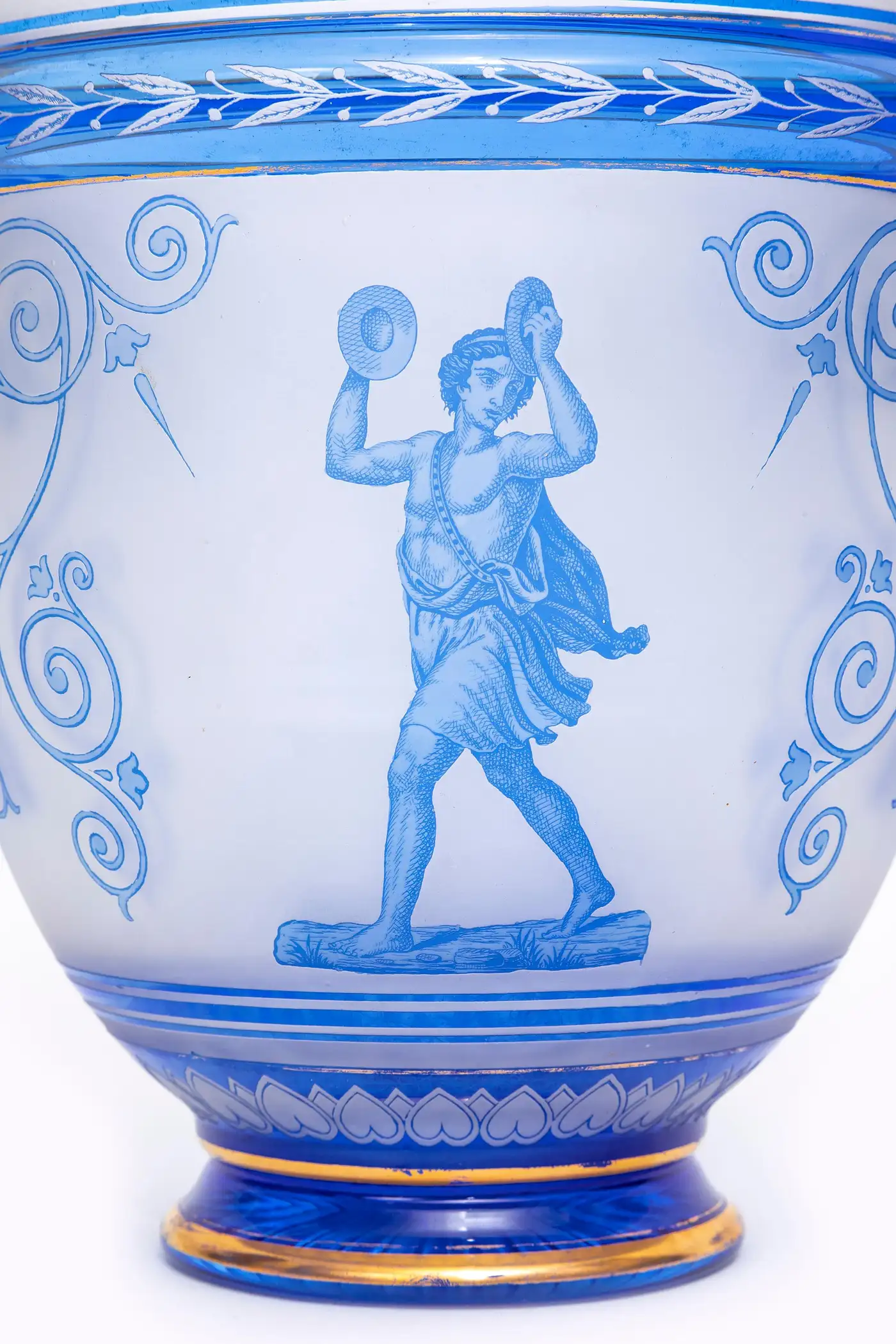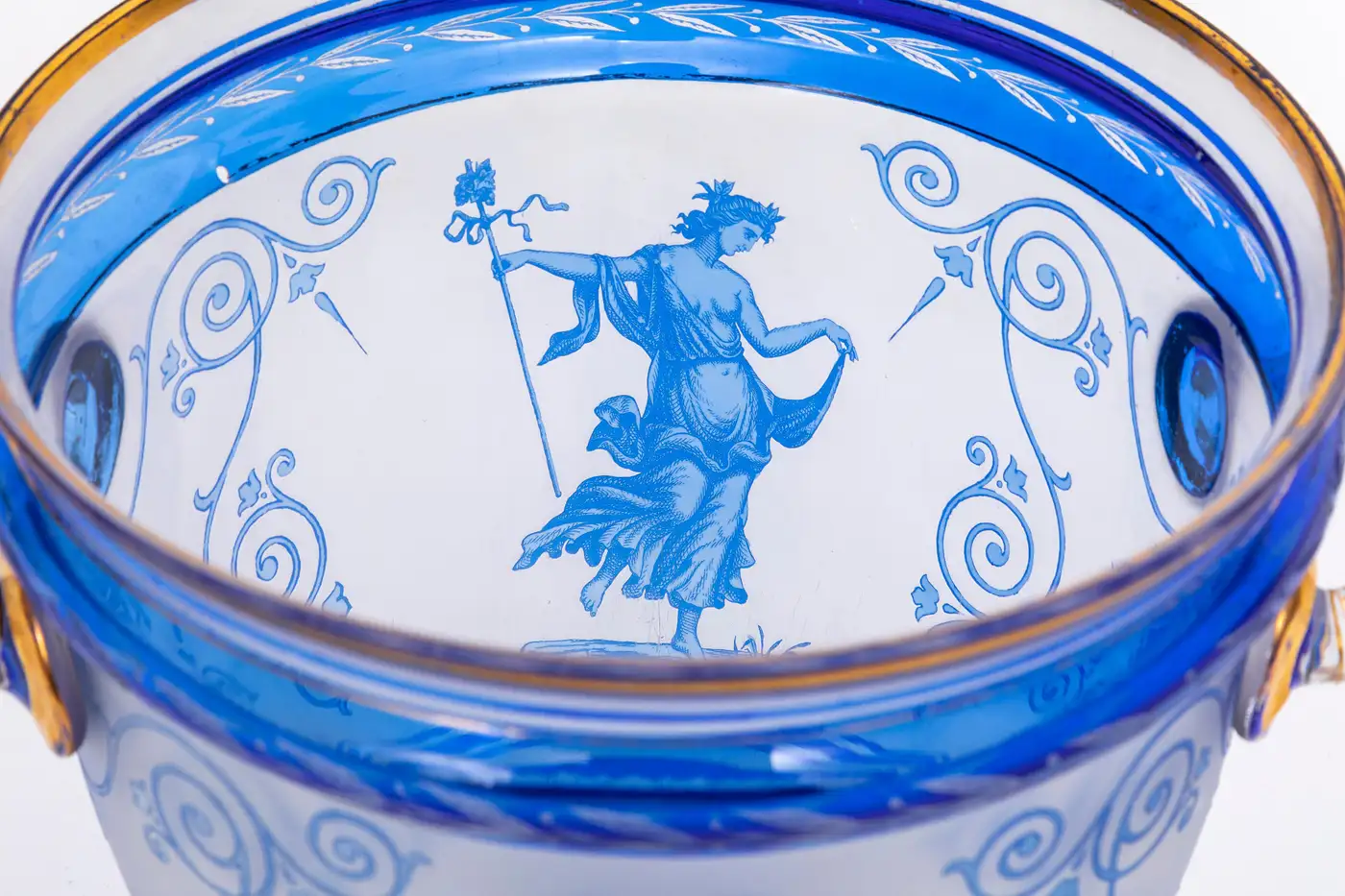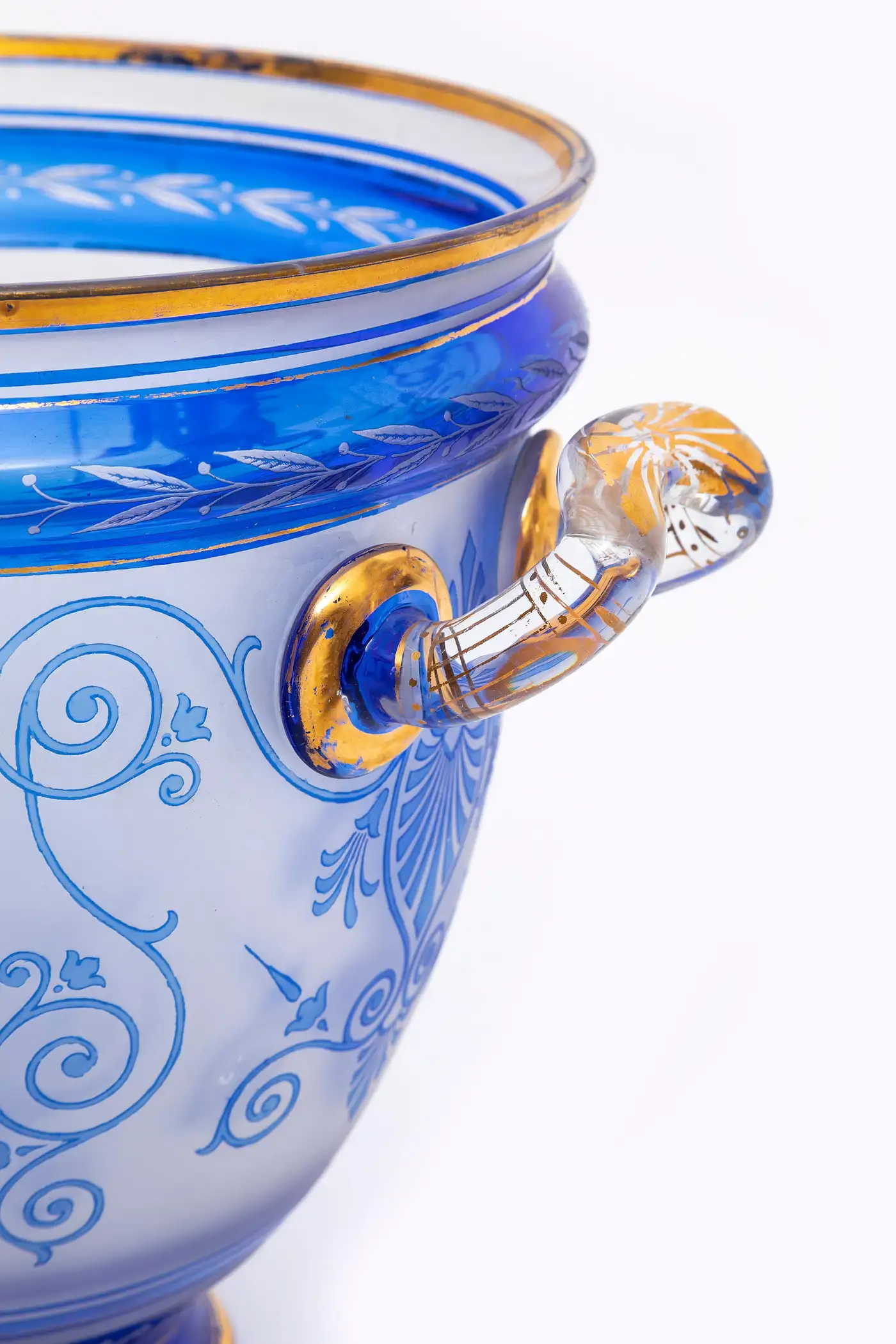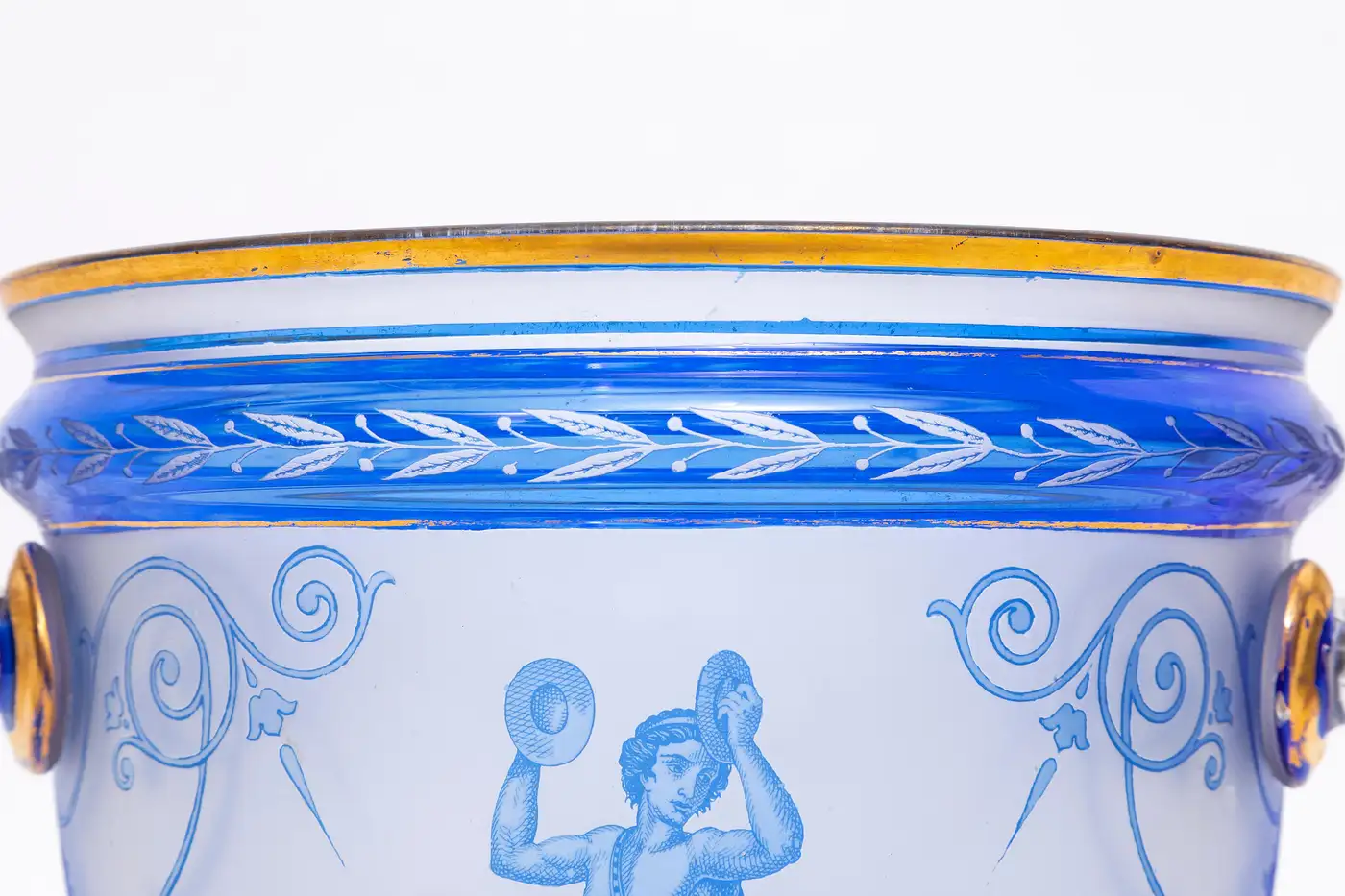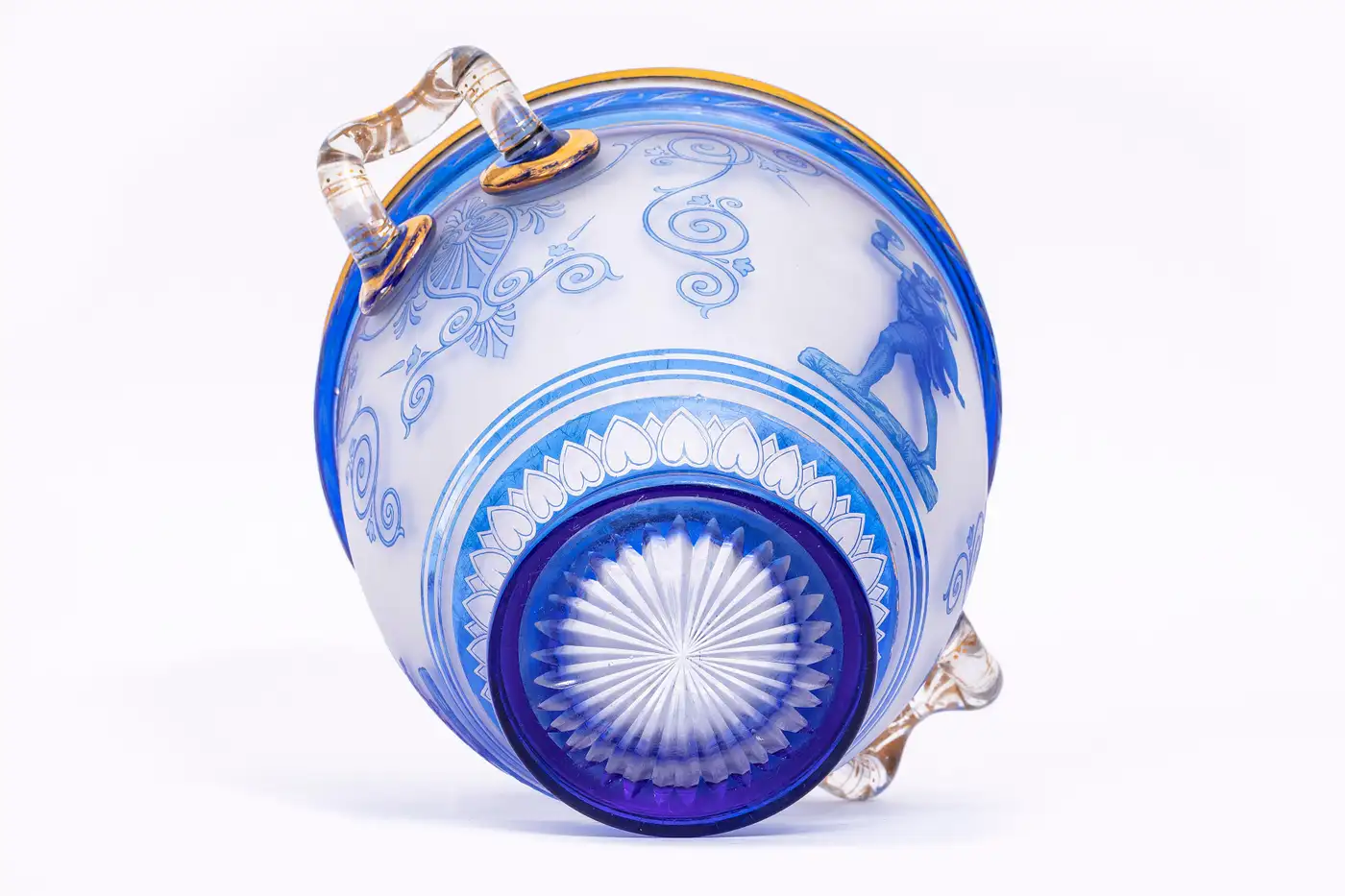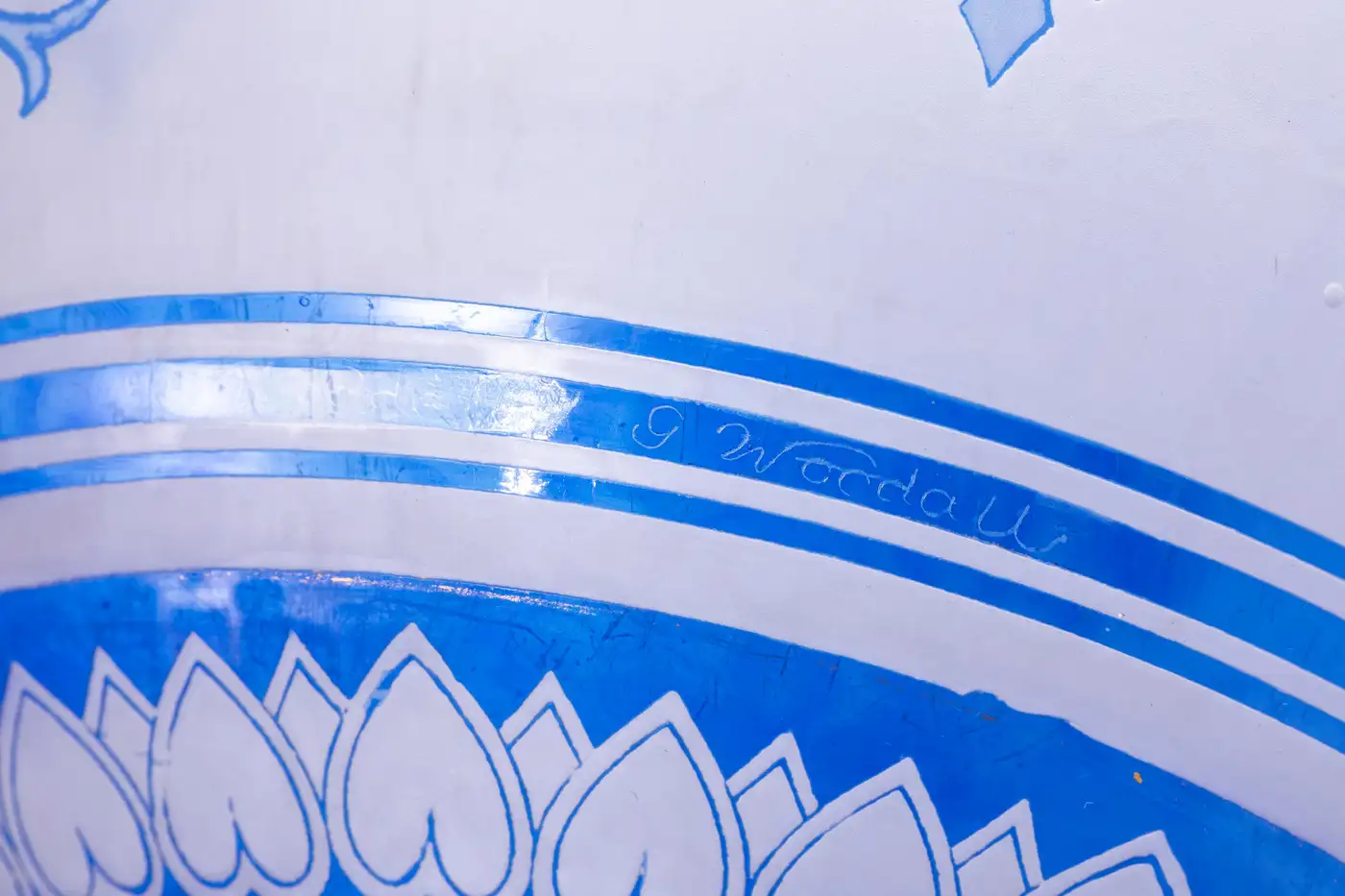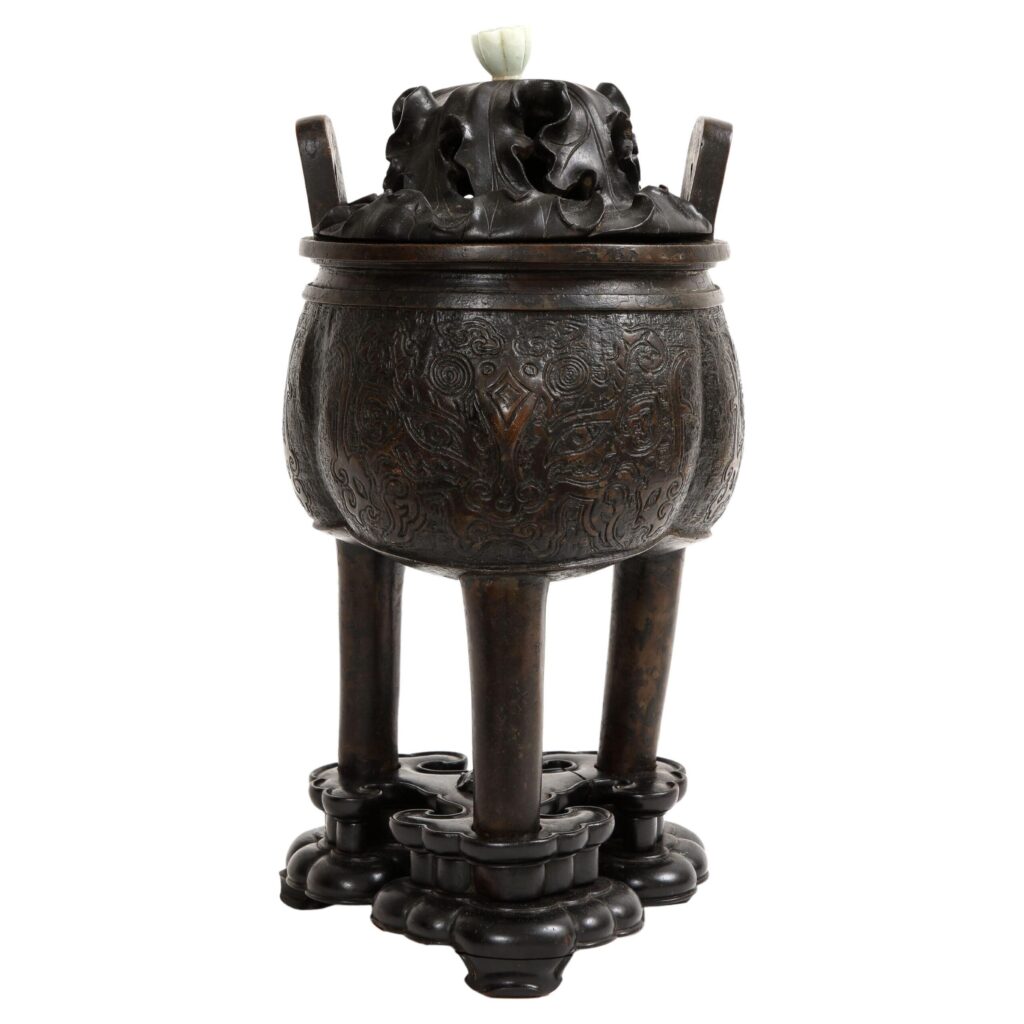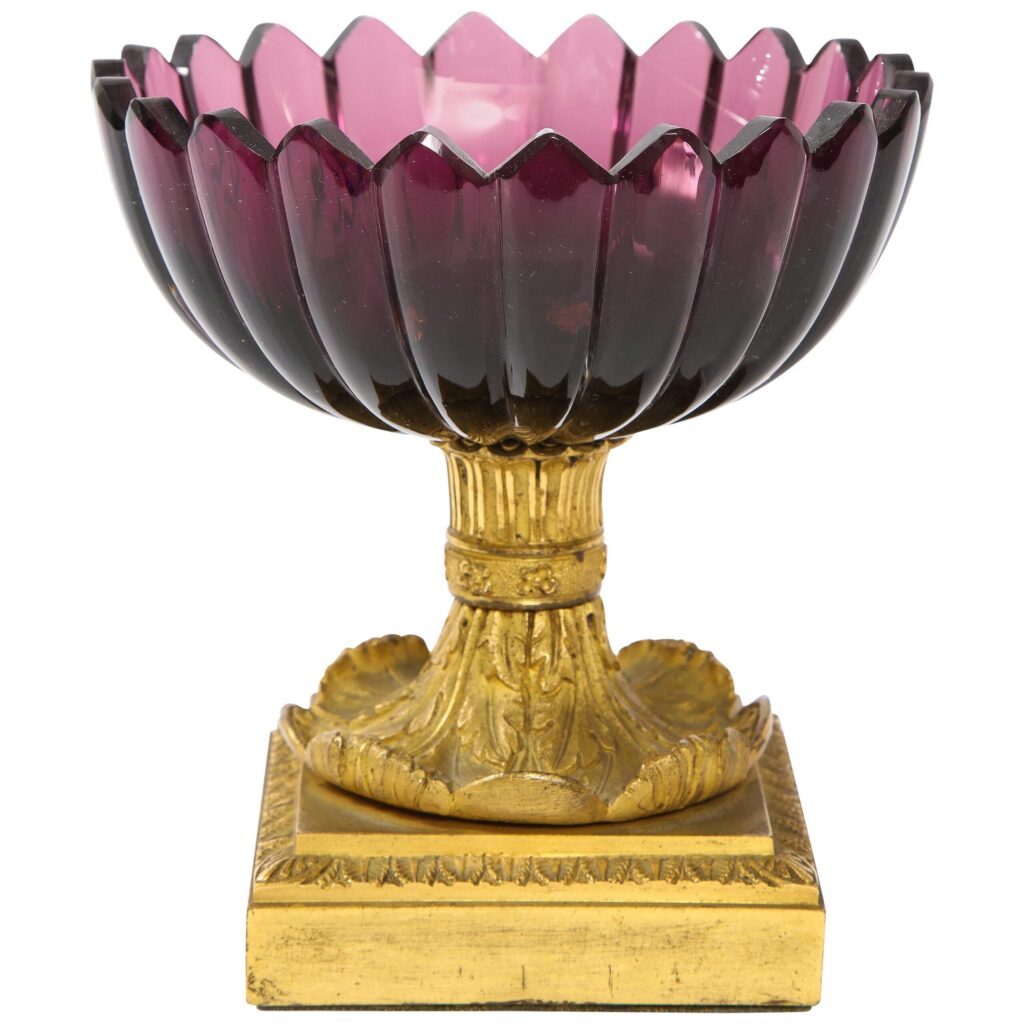English 19th C. Thomas Webb & Sons Double Handle Cameo Vase, Signed G. Woodall
$36,520.00
+ Free ShippingProduct Description
A Rare and Highly Important Antique English 19th Century Thomas Webb & Sons Blue Cut-to-Clear Double Handle Cameo Wine Cooler, Signed G. Woodall. Etched and Ccid Washed. This 19th century wine cooler’s charm is held within its neoclassical imagery and vivid blue cut-to-clear colorway. Depicting a scantily-clad woman draped in translucent robes, hair pinned around the crown of her head, and wielding a scepter of grapes, this image is made with Ancient Greek and Roman art in mind. The woman is surrounded by elongated acanthus leaves that coil into loose spirals. Above and beneath her are thick blue lines that differentiate the frieze from the mouth and base of the vase. The lines contain delicate palm patterning and scalloped hearts. Thin gilding adorns the rim, base, and handle attachments on the vase. Each section is beautifully hand-cut from blue-over-clear crystal and further adorned with 24K gilt decoration. The piece is all etched and acid washed with extraordinary quality and craftsmanship. George Woodall is well known for being one of the most important cameo crystal/glass cutters of the 1800’s. The piece is signed, “G Woodall”.
Founded in 1837, Thomas Webb & Sons quickly established a reputation as the “Crystal King of England,” cementing this title with prizes at London’s Great Exhibition of 1851 and Paris’ Exposition Universelle of 1878. Prompted by the success of Portland Vase replicas by competitors Northwood and Locke, Thomas Webb & Sons shifted its focus from crystal to cameo glass by 1880, hiring George and Thomas Woodall, who formed the firm’s Woodall Team. The Woodall brothers, who trained as apprentices at J. & J. Northwood and later served as designers at Dennis Glass Works, revolutionized cameo glass with both technical innovations and aesthetic achievements. The Woodalls developed and utilized blue-tinged, rather than opaque, white glass gradually removed to produce a wide range of shades over a plum or burgundy ground, creating a semi-transparent, luminous effect. They also employed cutting wheels extensively in order to increase efficiency and meet the public’s voracious demand. George Woodall, considered the greatest cameo glass artist during its height from 1880 to 1910, was renowned for the breadth of his design sources, including Neoclassical and Oriental, his technical prowess, and his prolific output.
Height: 8.25 in (20.96 cm)
Width: 10 in (25.4 cm)
Depth: 8 in (20.32 cm)

